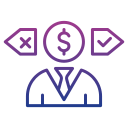SBA Loans Explained: Clear Paths to Smarter Small‑Business Financing
Today’s chosen theme: SBA Loans Explained. We’ll demystify programs, process, and pitfalls so you can borrow with confidence. Read, comment with your questions, and subscribe for practical tips that make funding feel human, hopeful, and achievable.
What SBA Loans Really Are
The SBA doesn’t lend directly; approved lenders do. The SBA guarantees a portion of the loan, sharing risk so lenders can offer longer terms, predictable payments, and flexible structures to businesses that might otherwise struggle to qualify.
What SBA Loans Really Are
Strong management, clear use of funds, adequate cash flow, and reasonable collateral often matter more than perfection. Lenders look for character, capacity, and a plan that clearly shows how the loan will be repaid under realistic assumptions.


SBA 7(a) loans can fund working capital, equipment, partner buyouts, or business acquisitions. Flexible uses and longer repayment terms help smooth cash flow, giving owners breathing room to invest in people, process, and growth.
SBA Programs at a Glance
The 504 program pairs a bank with a Certified Development Company to finance major fixed assets. Think owner‑occupied real estate or big equipment, often with longer, fixed‑rate portions that can stabilize costs over many years.
SBA Programs at a Glance
From Idea to Approval: The Application Journey
Expect to provide tax returns, financial statements, personal financials, a business plan, and a detailed breakdown of how you’ll use the funds. Clarity and completeness reduce back‑and‑forth and signal reliability to your lender.
Rates, Fees, and Terms—Demystified
How Interest Rates Are Structured
Rates often reference a base index, plus a lender spread within SBA guidelines. Your risk profile, loan size, and repayment term influence final pricing, so demonstrate stable cash flow and thoughtful assumptions to strengthen your position.
Fees You Might See
You may encounter guarantee fees, packaging fees, and standard closing costs. Ask lenders for a transparent estimate early, compare total cost over the life of the loan, and consider how improved terms may justify initial expenses.
Terms, Amortization, and Prepayment
Longer terms can reduce monthly payments, easing cash flow during growth. Review amortization schedules carefully and ask about any prepayment considerations so you can plan ahead and preserve flexibility if conditions change.

Collateral can include business assets and, when available, personal assets. Even if collateral is limited, a strong plan and proven cash flow can still win support under SBA standards focused on repayment ability.






Packaging a Winning Proposal
Explain your market, your edge, and your process. Show how people, systems, and partners work together, then connect loan dollars to milestones that reduce risk and expand capacity without overextending your team.
Packaging a Winning Proposal
Build conservative forecasts tied to real drivers—conversion rates, capacity, seasonality, and pricing. Include sensitivity cases, explain assumptions plainly, and demonstrate debt service coverage with a cushion that makes lenders comfortable.
